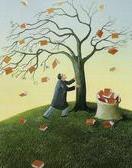Adjetivos y Pronombres Demostrativos
Cerca
This = éste,ésta, esto
These = éstos, éstas
Lejos
That = ése,ésa,eso
aquél,aquélla,aquello
ésos,ésas,aquéllos,aquéllas
En Inglés hay dos planos de distancia.
CERCA This (singular)
These (plural)
LEJOS that ( singular)
those ( plural)
En español tenemos Cerca = éste
Lejos = ése
más lejos = aquél
y that / those se refiere a algo alejado
This flower these flowers
that tree those trees
* this / these como that / those pueden actuar
como adjetivos o como pronombres.
Cómo Identificar Personas
Singular
Who´s this? ¿Quién es éste / ésta?
Who´s that? ¿Quién es ése,ésa / aquél / aquélla?
Plural
Who are these? ¿Quiénes son éstos/ éstas?
Who are those ¿Quiénes son ésos / ésas/ aquéllos/aquéllas
El Plural de los Sustantivos
La mayoría de los sustantivos,en inglés, forman el plural
añadiendo /s/ al singular
a girl girls
a friend friends
Pero existen otros casos
1. Los sustantivos terminados en s,ss,x,sh,ch forman
el plural añadiendo es al singular.
a bus buses
a glass glasses
a box boxes
a watch watches
2. Los sustantivos terminados en /y/,cuando es precedida
de consonante, cambian la /y/ en /i/ y añaden /es/
a country countries
a baby babies
a dictionary dictionaries
Sin embargo cuando la /y/ va precedida de vocal,sólo
añaden /s/.
a boy boys
a day days
3. Los sustantivos terminados en /o/ añaden generalmente
/es/
a tomato tomatoes
a potato potatoes
Excepto:
a piano pianos
a radio radios
4. La mayoría de los sustantivos terminados en /f/ o /fe/
pierden esta terminación y añaden /ves/ los más usuales
son:
a wife wives
a wolf wolves
a knife knives
a shelf shelves
excepción:
a roof roofs
5. Finalmente,hay sustantivos cuyo plural es irregular
generalmente, hay un cambio vocal:
a man men
a woman women
a tooth teeth
a foot feet
a child children
Localizar objetos y personas
Where are you? ¿Dónde estás?
¿Dónde estáis?
Where is he/she/it? ¿Dónde está?
Where are they? ¿Dónde están?
Preposiciones
Estas son las preposiciones más corrientes
In , on, at, under
behind, in front of, near, between
In
on = en
at
at junto a
at the door = junto a la puerta
In dentro de = in the house
on sobre = on the floor
Como punto de referencia:
The cat´s at the door
She´s at the bus-stop
I´m at the table
Alusión a un lugar por actividad
The students are at school
My brother is at the bank
James is at the cinema
In front of = delante de, No enfrente de
John is in front of Jane
Opposite = en frente de
The pub is opposite the cinema
El pub está frente al cine
Between = entre
The pub is between the theatre and the restaurant
Artículo Determinado THE
delante de consonante se dice (de)
y delante de vocal se dice (di)
The sun
the moon = de
cinema
the artist
The armchair = di
El artículo THE es invariable, es decir, que no tiene
género ni número (el,la,lo,los,las)
The sun = el sol
the moon = la luna
the stars = las estrellas
THE se omite
1. En plural cuando se habla en general:
Flowers are beautiful
(todas las flores en general)
2. Cuando hablamos de algunos lugares públicos
He´s at school
Mary´s in hospital
We´re at home
My mother is at work
Describiendo personas
What´s he like?
What´s she like? Like? = ¿Cómo es?
What´s it like?
What are they like? = ¿Cómo son?
Adjetivos Calificativos
En inglés el adjetivo calificativo es siempre invariable;
no tiene género ni número.
This man is old
This woman is old
These men are old
is= verbo
old = adjetivo
Artículo + Adjetivo + Nombre
This is an old man
Adjetivo + Nombre
These are old men
Continuara...

